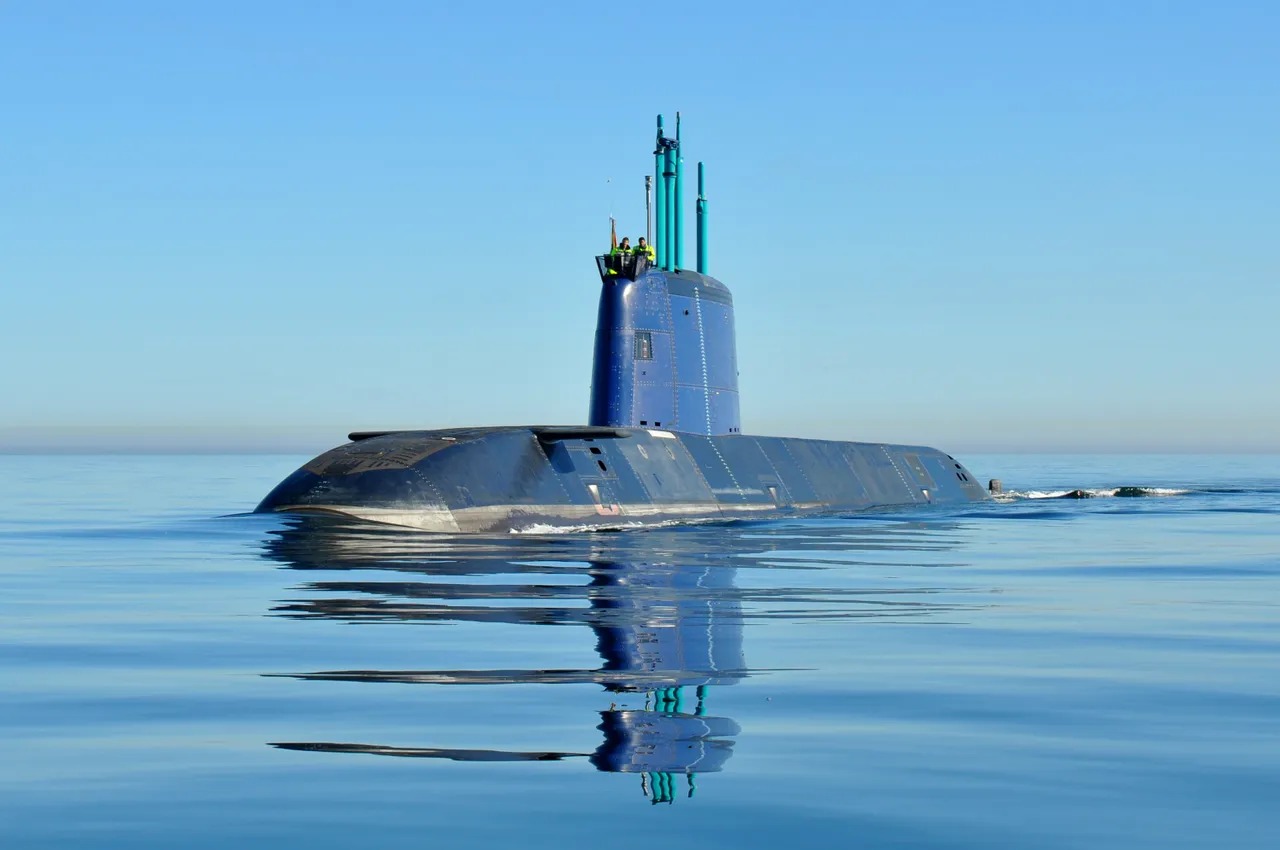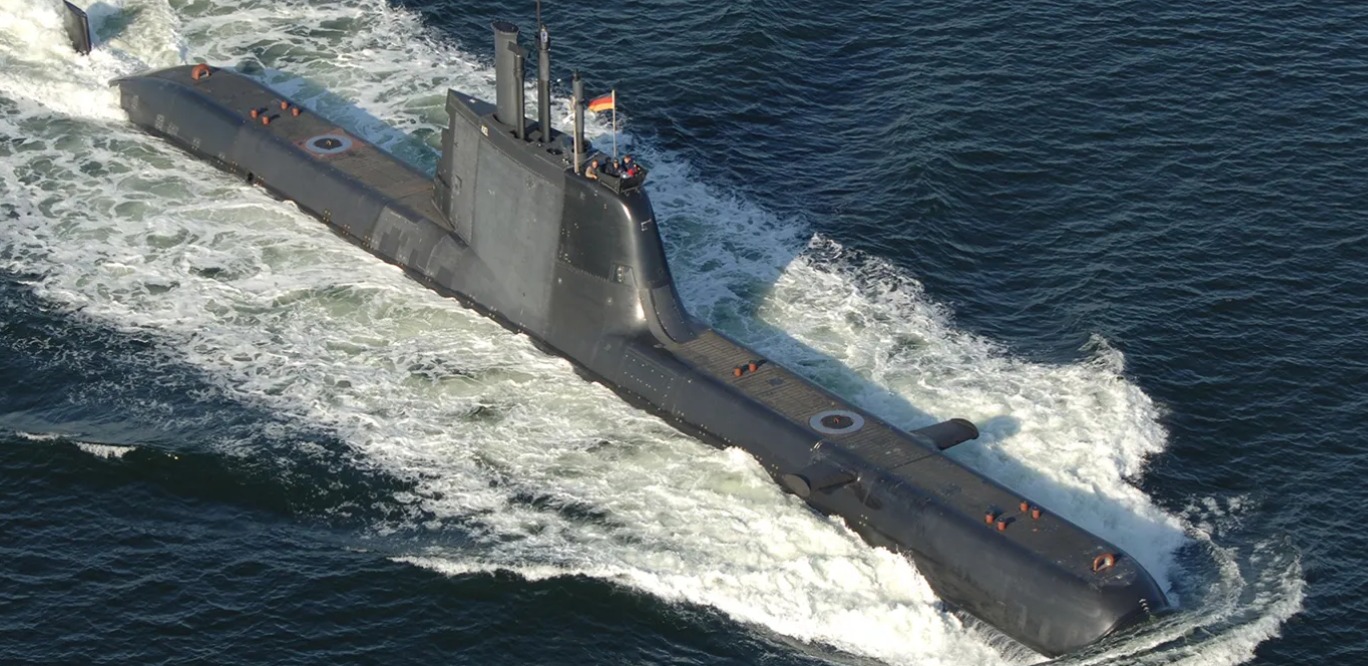Kiel (Germany): The Indian Navy has been looking for six submarines under its Project-75I (I stands for India). These submarines will have Fuel Cell Air-Independent Propulsion (AIP) technology combined with a Lithium-ion battery, which will give them the capability to lurk in the ocean depths for a longer duration and, when required, race to their target at high speeds while not giving up their position.
The Indian Navy is not looking to maintain a competitive edge by being the biggest and fastest but rather by being the quietest and most lethal.
The German shipbuilder ThyssenKrupp, which is the frontrunner for bagging the Indian contract, has offered its 214-class submarines. These combine the advanced technological aspects of 212 CD submarines with the latest developments in AIP technology. The 212 CD class submarines are built exclusively for the Norwegian Navy and are tailored to their operating requirements in the Baltic Sea.
The 214 being offered to India will be tailored to the requirements of the Indian Navy. It will be a derivative of the 214 class of submarines, with the latest enhancements in AIP technology. It will be equipped with a Lithium-ion battery, have an advanced sensor and combat system, and not compromise on stealth features.
“In this, our big advantage is our unique AIP solution. The submarine design is a derivative of the well-established HDW Class 214 submarine, which is currently in service with several navies worldwide. It will be tailored to the Indian Navy’s requirements and incorporate technological advancements. To summarise our Project-75I design: it is proven, it is advanced, and it is for India,” Dr. Christian Frühling, the tkMS Program Head for Project-75I, told the EurAsian Times during an exclusive interview.
The combination of a fuel-cell-based AIP system and Lithium-Ion battery will bring a game-changing capability for the Indian Navy, which has a long area of responsibility straddling from the Gulf of Aden in the West to the Strait of Malacca in the East. In the face of the growing Chinese maritime capability, the Indian Navy requires a credible submarine force.
The Fuel-cell AIP gives the submarine long-range endurance at low speed, whereas the Lithium-ion battery allows it to cruise at a high speed to reach its desired destination. European countries do not use it, but Japan has been using it. And the tkMS will be integrating the two technologies for the Indian Navy if it bags the contract.
“The submarines can remain submerged longer and can also have high-speed performance. The combination makes sense,” Frühling added. In simpler words, the technology will help the Indian Navy the range to cover the entire Bay of Bengal while remaining submerged. A submarine is the most vulnerable when it is at periscope depth for snorting to take onboard oxygen to drive its electric batteries. The AIP technology means that it will have to surface less.
Also, the hydrogen-powered fuel cell-based AIP technology in the new 212 and 214 class submarines gives them the capability to remain submerged for three weeks at a time. The tkMS that makes these sea leviathans also owns the Howaldtswerke-Deutsche Werft (HDW), the company that made the world’s first wartime submarine.
The 212 or 214 class of submarine can operate silently without emitting exhaust heat, increasing its stealth. Fuel cells offer the lowest noise levels because almost no sound is produced by an electro-chemical reaction. It can launch torpedoes stealthily with a water ram expulsion system. It also comes with countermeasures against torpedoes like underwater effector jammers and has minimized acoustic, thermal, and magnetic signatures to provide more stealth.
AIP-enabled submarines have increased mobility. They can “bottom” or sit on the ocean floor with only critical systems running to preserve energy and extend the operational time while using passive sonar to detect targets. Since fuel cells operate with greater efficiency at lower loads, bottoming could extend the endurance of a particular mission.
As the EurAsian Times understands, efficient energy systems onboard have been one of the requirements of the Indian Navy.
The company tailors the propeller to meet the requirements of the customer navies, giving each one of them their unique signatures. During the visit to the manufacturing facility, the author saw one of the 214 under construction for an unnamed customer. The facility in Kiel is geared up for manufacturing 5-6 submarines.
The company can also conduct the submarines’ sea trials independently, as it has a full-fledged crew comprising seasoned military submariners. Its subsidiaries manufacture torpedoes, sensors, and combat management systems for the submarines.

Non-Nuclear AIP-Enabled Submarines
As against the required 24 conventional submarines, the Indian submarine fleet has only 16 submarines, and apart from the six recently-built submarines, the rest are over 30 years old and approaching their decommissioning date. The project, therefore, is expected to be a high-priority project for the Indian Navy.
An AIP-based submarine is cheaper than a nuclear-powered submarine. Non-nuclear submarines are also less expensive to maintain and manage. Fuel cell systems are modular and can be replaced quickly and easily, and these submarines have crews of 25–35 people.
After its initial reluctance when the tender was floated three years ago, the German government has also thrown its weight behind the project. In March 2024, the German Navy provided its submarine for the Indian Navy to evaluate in the field. The Indian Navy team also went on a day-long diving trial in the 212-class German submarine to evaluate the AIP technology.
The tkMS is confident about the technology, as so far it is the only company with sea-proven fuel-cell-based AIP systems. The 214-class submarine is presently being operated by Greece, Portugal, Turkey, and South Korea.

Transfer Of Technology
The Indian Navy already operates 209-class submarines. Two of them, INS Shishumar and INS Shankush, underwent a refurbishment that will extend their lives for another decade or so. The tkMS, in partnership with Mazagon Dockyard Limited (MDL), has been undertaking these repairs. The two companies jointly manufactured the four submarines for the Indian Navy.
The German firm has been working with MDL since the 1980s. The first two boats in the 209 class were built in Germany, and the remaining two were constructed at the MDL shipyard in India. The submarines have never been to Germany for repair or refurbishment; this has been done entirely by MDL.
Now, the two firms are coming together to bid for Project-75I. “It is worth noting that tkMS is unique amongst western submarine providers in having a history of enabling the creation of fully autonomous submarine industry in other countries,” Dr. Christian Frühling added.
In Project-75I, the submarines will be built in India from the first boat onwards. tkMS will supply the design and critical elements. MDL will be the bidding company for the project, with tkMS as the foreign collaborator. The first submarine will be built around seven years from the date of the contract; thereafter, one submarine can be expected every year.
“We have already begun the design work on the project in conjunction with the MDL,” informed Frühling.
The field evaluations are expected to be over by June this year. The other contender in the fray, Spain’s Navantia, does not have an operational AIP technology yet. In 2023, the factory acceptance tests of the AIP BEST (Bio-Ethanol Stealth Technology) system for the S-80 submarines.
So, it remains to be seen if the Indian Navy will choose proven technology or wait for Navantia to validate its technology. Given the Indian government’s recent foreign acquisitions, a government-to-government contract to build the submarines in India is a possibility.
The capability is urgent for India as China has been moving forward in building quieter and stealthier submarines and its submarines are becoming a frequent visitor in the Indian Ocean Region.
- Ritu Sharma has been a journalist for over a decade, writing on defense, foreign affairs, and nuclear technology.
- The author can be reached at ritu.sharma (at) mail.com
- Follow EurAsian Times on Google News




